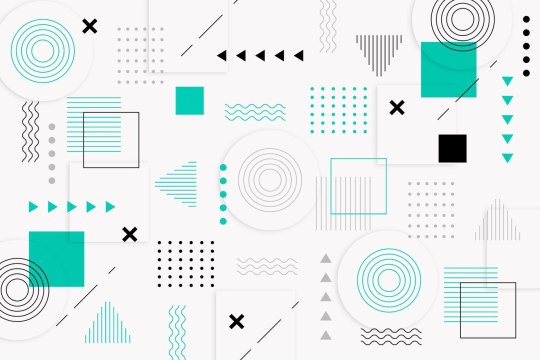Don't wanna be here? Send us removal request.
Text
The Art of Visual Communication in Graphic Design

Graphic design is a dynamic field that blends creativity with technology to convey messages and ideas through visual elements. Among the essential components of graphic design, one of the most crucial is the art of visual communication. This article delves into the second point, "Elements of Design," which encompasses the fundamental aspects of graphic design that every designer should master.
1. Color: The Palette of Emotions
Color is a powerful tool in graphic design, as it has the ability to evoke emotions, set the tone, and create a visual hierarchy. Designers must understand color theory to make informed choices when selecting color palettes for their projects. For instance, warm colors like red and orange can convey energy and passion, while cooler tones such as blue and green often represent calm and serenity. The skillful use of color can guide the viewer's eye and elicit specific emotional responses.
2. Typography: The Art of Letterforms
Typography is the art and technique of arranging type to make written language legible, readable, and visually appealing. Choosing the right typeface is crucial, as different fonts carry various connotations and can greatly impact the message. For example, a playful and whimsical typeface may not be suitable for a formal document, while a sleek, modern font can enhance the aesthetics of a tech startup's logo. Proper alignment, spacing, and hierarchy within text also contribute to readability and aesthetics.
3. Images and Graphics: Telling a Visual Story
Images and graphics play a pivotal role in graphic design, whether it's creating stunning illustrations, enhancing photographs, or crafting compelling infographics. Designers often utilize software like Adobe Photoshop and Adobe Illustrator to manipulate and edit visual elements. The choice and placement of images should align with the design's purpose and message, reinforcing the overall visual narrative.
4. Layout and Composition: Organizing the Visual Space
Layout and composition involve arranging all design elements within a defined space to create a harmonious and visually pleasing composition. Concepts like balance, contrast, alignment, proximity, and repetition guide designers in achieving effective layouts. A well-structured layout ensures that the viewer can easily navigate the content and grasp the intended message.
5. Hierarchy: Guiding the Viewer's Eye
Visual hierarchy is about emphasizing certain elements over others to lead the viewer's eye through the design. This involves using techniques such as varying font sizes, colors, and placement to guide attention to the most important information. Effective hierarchy is vital for ensuring that the viewer can quickly and intuitively understand the content's significance.
6. Simplicity: Less is Often More
The principle of simplicity emphasizes the importance of clarity and minimalism. Graphic designers should avoid clutter and excessive detail that can overwhelm the viewer. Often, simplicity leads to elegance and a more profound impact.
In conclusion, understanding and mastering the elements of design is fundamental for any graphic designer. These elements serve as the building blocks for creating visually compelling and effective designs. By harnessing the power of color, typography, images, layout, hierarchy, and simplicity, designers can craft visual narratives that captivate, inform, and inspire. Whether working on a logo, a poster, a website, or any other project, these design elements remain at the heart of every successful graphic design endeavor.
#GraphicDesign#DesignPrinciples#VisualCommunication#ColorTheory#Typography#ImagesAndGraphics#LayoutAndComposition#VisualHierarchy#DesignElements#DesignFundamentals#CreativeDesign#DesignAesthetics#VisualArt#DesignBasics#SimplicityInDesign#DesignSkills#ArtOfArrangement#DesignConcepts#EffectiveDesign#GraphicDesignTips
0 notes
Text
Unlocking the Power of Graphic Design: Tips for Stunning Visual Communication

In a world inundated with information and messages, visual communication has become more critical than ever. It's the first impression you make on your audience, and it can convey a message far more effectively than words alone. At the heart of this visual revolution is the art and science of graphic design. Let's delve into the first point: the power of visual communication through graphic design.
Understanding Visual Communication
Visual communication is the practice of using visual elements like images, typography, color, and layout to convey ideas, information, or emotions. While the concept of visual communication has been around for centuries, it's the role of graphic designers that truly amplifies its impact.
The Role of Graphic Designers
Graphic designers are the artists and problem-solvers of the visual communication world. They bring their creative talents and technical skills to the table to create designs that captivate, inform, and inspire. Here's how they do it:
1. Typography:
Typography is the art of arranging and selecting typefaces (fonts) to make the text not only readable but also visually appealing. A skilled graphic designer knows how to choose the right fonts and how to arrange text to create a harmonious and effective design.
2. Imagery:
Images and illustrations can speak volumes without saying a word. Graphic designers incorporate visuals that align with the message, whether it's a striking photograph, a carefully crafted illustration, or an eye-catching logo.
3. Color Theory:
Colors aren't just pretty; they have psychological and emotional effects. Graphic designers understand color theory, helping them choose the right colors to evoke specific emotions or reinforce a brand's identity.
4. Layout and Composition:
How elements are arranged on a page or screen plays a pivotal role in guiding the viewer's eye and conveying information. Graphic designers excel at creating layouts that are visually engaging and easy to navigate.
5. User Experience (UX) Design:
In today's digital age, graphic designers often collaborate with UX designers to create user-friendly interfaces. They ensure that the design not only looks good but also enhances the overall user experience, whether it's on a website, mobile app, or software.
6. Branding:
Graphic designers are the custodians of a brand's visual identity. They design logos, business cards, and marketing materials that are not only aesthetically pleasing but also consistent with the brand's image.
The Impact of Graphic Design
Graphic design isn't just about creating pretty pictures. It has a significant impact on our daily lives:
Advertising and Marketing: Eye-catching advertisements and marketing materials are the work of graphic designers. They have the power to attract and engage the target audience effectively.
Web and App Design: Every website, app, and software interface you interact with has undergone graphic design. Intuitive layouts and visually appealing designs make your digital experience seamless.
Print and Publishing: From book covers to magazine layouts, graphic design ensures that printed materials are not only informative but also visually appealing.
Artistic Creativity: Graphic designers are artists in their own right. They bring creativity and originality to everything they design, making the world more beautiful and engaging.
Conclusion
Graphic design is the language of the modern world. It's what makes a product stand out on the shelf, a website easy to navigate, and a message unforgettable. So, the next time you see a beautifully designed logo or a striking ad, remember that it's the result of the powerful visual communication art known as graphic design. It's not just about aesthetics; it's about effectively communicating with the world.
#GraphicDesign#VisualCommunication#DesignElements#Typography#ColorTheory#UserExperience#BrandIdentity#AdvertisingDesign#WebDesign#PrintDesign#DigitalArt#CreativeDesign#ArtisticExpression#MarketingMaterials#Illustration#LayoutDesign#EffectiveCommunication#Aesthetics#VisualImpact#DesignProcess
1 note
·
View note
Text
"Mastering the Art of Graphic Design: 10 Essential Principles for Visual Brilliance"

Graphic design is all about creating eye-catching visuals that communicate a message effectively. Whether you're a seasoned designer or just getting started, understanding the fundamental principles of graphic design is crucial. These principles serve as the building blocks for creating stunning and memorable designs. Let's explore ten essential principles that every graphic designer should know:
1. Balance: Balance is about achieving visual stability in your design. You can use symmetrical or asymmetrical balance to distribute elements harmoniously.
2. Emphasis: Highlight the most important elements in your design to guide the viewer's attention. This is often achieved through contrast, color, or size.
3. Contrast: Contrast helps create visual interest. Pairing elements that are different in terms of color, size, or shape can make your design pop.
4. Alignment: Proper alignment ensures that elements in your design are visually connected and organized. It helps maintain a sense of order and clarity.
5. Repetition: Repeating design elements such as colors, shapes, or patterns creates unity and consistency throughout your project.
6. Proximity: Group related elements closely to show their relationship. This helps users quickly understand the content's organization.
7. Typography: The choice of fonts and how you arrange text is vital. It can convey emotions and reinforce your design's message.
8. White Space: White space, or negative space, is the empty area around elements. It's essential for preventing visual clutter and allowing content to breathe.
9. Color Theory: Understanding color psychology and the color wheel is crucial for creating a mood and conveying the right message.
10. Simplicity: The famous saying "less is more" holds true in graphic design. Strive for simplicity and avoid unnecessary complexity.
By incorporating these principles into your designs, you'll be better equipped to create visually stunning and effective graphics that leave a lasting impact. Keep experimenting and practicing, and you'll continue to grow as a graphic designer.
8 notes
·
View notes